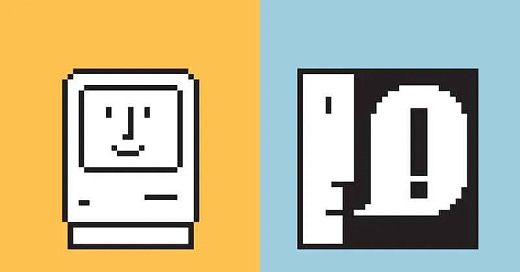Who are your favorite UX designers? Most of the names we know are people who get attention for their opinions and talks more than their design work: consultants and authors. Or perhaps a few executives who, we presume, spend more time in meetings than doing product design work themselves. If we made a list of our favorite products or experiences, the actual designs we love, it’s a good bet few of us could name who worked on them, even for things we love to use every day.
Do you know who Larry Tesler was? He, along with Tim Mott, invented cut, copy and paste, the now universal UI for editing almost anything on almost any device. Or Susan Kare, who designed the typefaces and icons for Apple’s Macintosh? How about Douglas Engelbart? Every time your hand touches a computer mouse, you have Englebart to thank. In his famous 1968 mother of all demos, he showed the world not only the first mouse, but personal computing, windows, hypertext, video conferencing and real time collaborative editing. And lets not forget the enigmatic hamburger menu, invented by Norm Cox? Or what about Chuck Harrison, one of the first black designers and executives in U.S. history, who designed hundreds of successful products for Sears, including sewing machines, blenders and trash cans, you have likely used without a thought.
One reason we we know so few design heroes is it serves corporations for their talented people to be anonymous. We rarely learn the names of star engineers or marketers either. The very idea of branding allows corporations to have a persona and a story that is more powerful and controllable than people are. Unlike movies, sports teams and music bands, where we get to know exactly who to thank for what, great product work is mostly opaque. When I worked on Internet Explorer 4.0 at Microsoft many years ago, we put a movie credit style list of everyone who worked on the product and we had to sneak it in as an easter egg. Why? we were warned that executives and customers would be angry at us for wasting time with such an “indulgence.”
A second reason is the old adage from Don Norman, that the best designs are invisible. Designs that get attention are often not doing as great a job as they could, and might be more about ego than craft. If you disagree, think through about the list above, and universal concepts like cut, copy and paste. If the design is really working well you can depend on it many times a day and never think about at it at all, that is, until it stops working (e.g. electricity, wifi or running water). Our greatest designers might simply care more about doing great work than getting credit for it.
A third reason is that design work is often collaborative, and many people contribute to bringing an idea to the world. The problem is our brains love simple, heroic stories, as they are easier to remember and more fun to share, regardless of how inaccurate they are. Thomas Edison, Steve Jobs and Elon Musk are all household names, but the dozens of inventors and creators who worked for them, often doing the lions share of inventing, are barely known. The myth of the lone inventor is rampant in tech culture.
In defense of famous people, it’s important to call out how much good fame can do in the world. Any designer with a large platform can use their visibility to progress the field. They can also reach outside design culture to educate the wider world that knows next to nothing about design. It doesn’t matter how long it has been since they touched Photoshop or Figma: if their message is helpful, we need that help. They can make important things happen that those without any fame cannot.
However it’s a critical exercise for you, dear reader, to pay attention to how you choose your heroes. Look for people who are doing, or have done, the work you are trying to do right now. When you recognize good work of the sort you hope to do, ask these questions and investigate the answers:
Who were the specific people who made this?
What problem were they trying to solve?
What resistance did they face to this idea?
How did they convince their organization to do it anyway?
And beyond my advice for you, teach me something if you have a moment: who is a design hero you have? And how did you choose them?





Like modern sports, in which we root for the laundry (a Bill Simmons quip), corporations are undifferentiated masses. Being in the background and maintaining our anonymity while making large impacts may not feed our egos, but can still result in acclaim and accolades—just in smaller circles.
The opening paragraph to the excellent Lords of Strategy by Walter Keichel gives a striking parallel:
"Bruce Doolin Henderson achieved executive position at an early age—he was the second youngest vice president in Westinghouse’s history—but he was fired from that job and every job thereafter, something he bragged about. Then, in 1963, he founded the Boston Consulting Group, which changed the world. The Financial Times would say of him, on his death in 1992, “few people have had as much impact on international business in the second half of the twentieth century.” Have you ever heard of Bruce Henderson?"
I love being reminded that just about EVERYthiNG we use has a designer behind it! Not to be quaint here, but my unsung design hero is my mother. Her design capabilities in clothing to pottery to fine art alone are amazing. She also cleverly designed so many elements of everyday family life. I am so lucky I grew up submersed in all she designed!